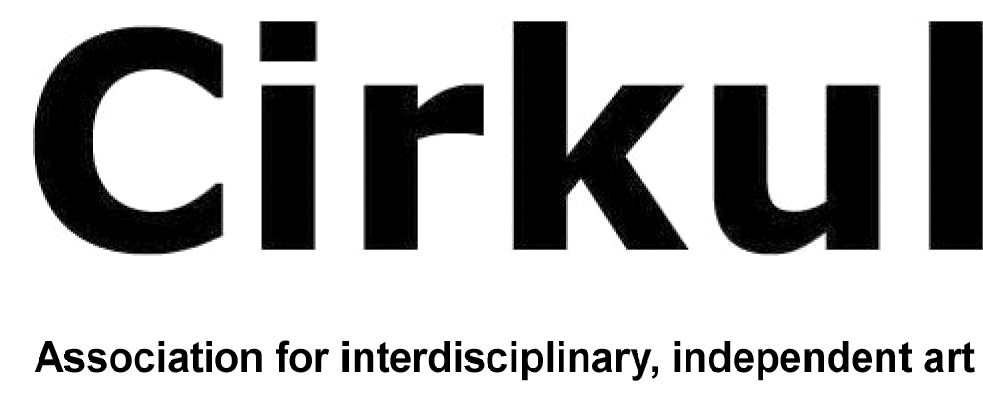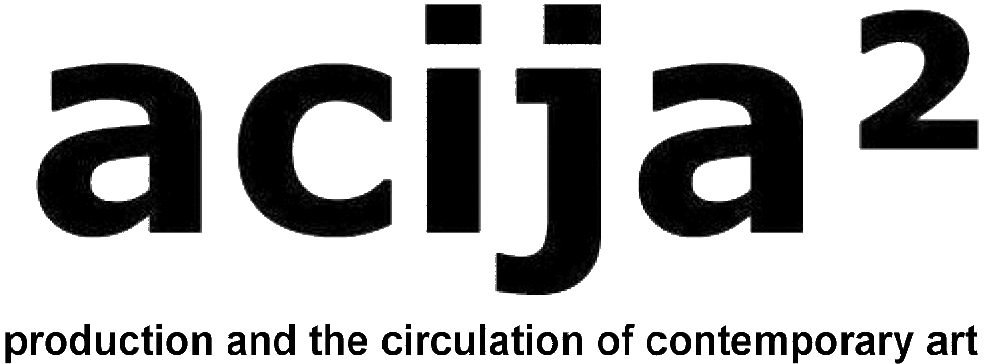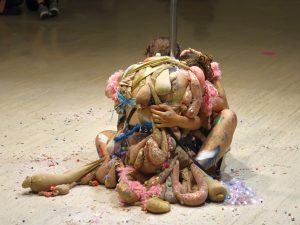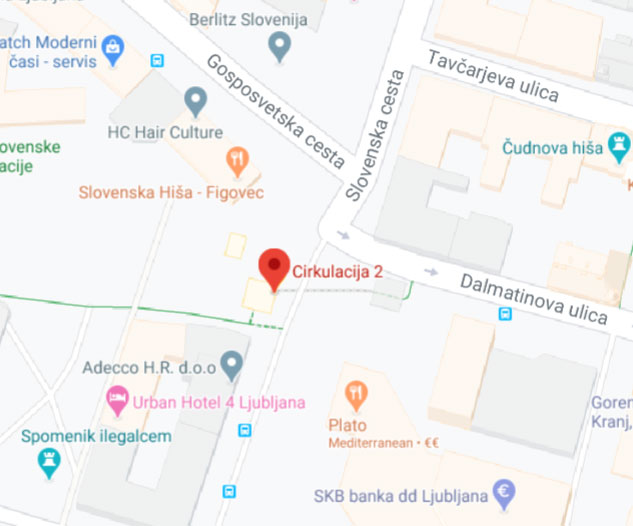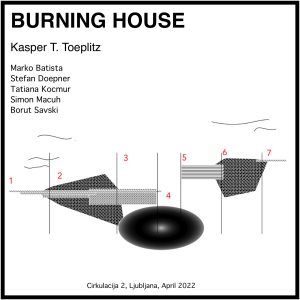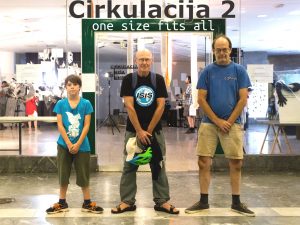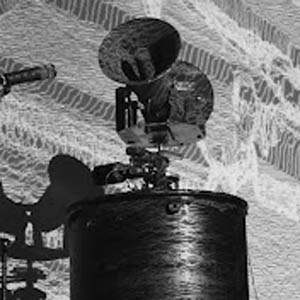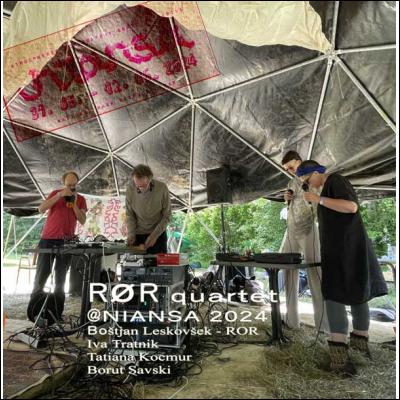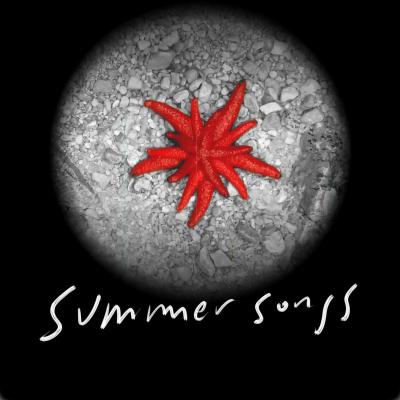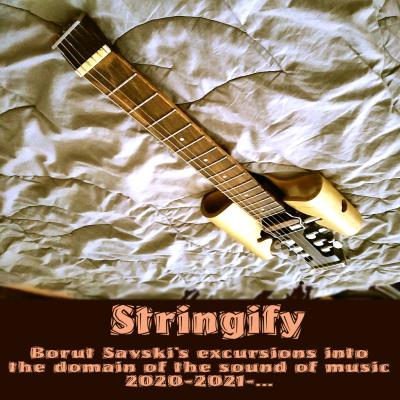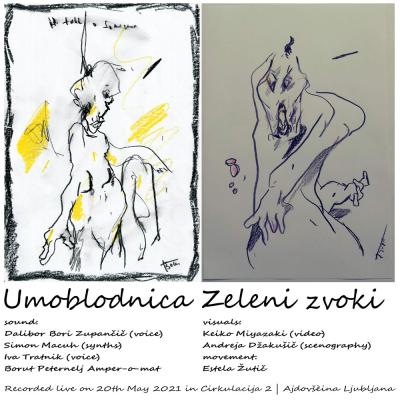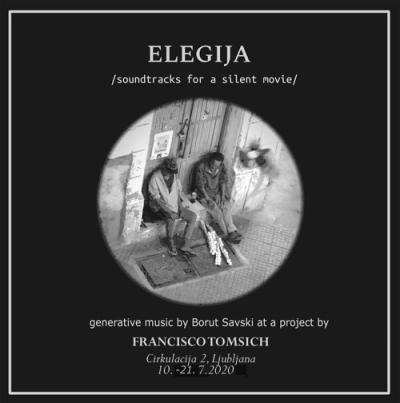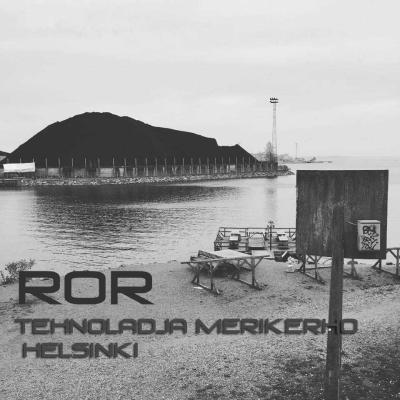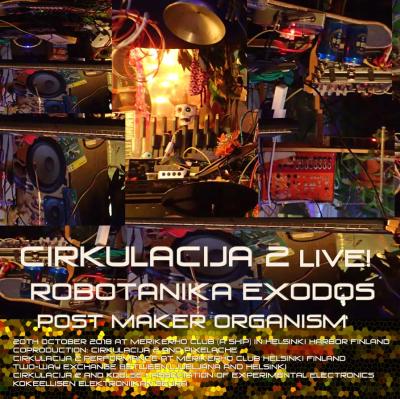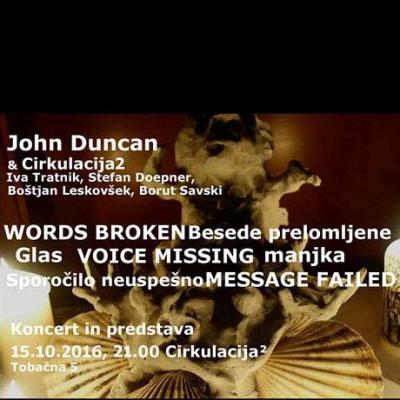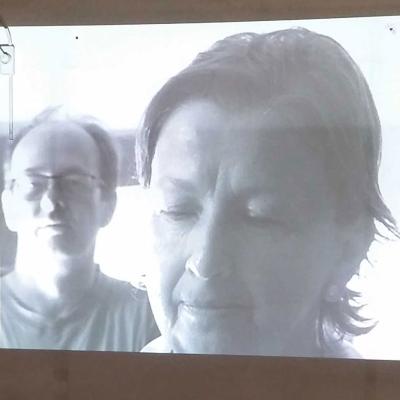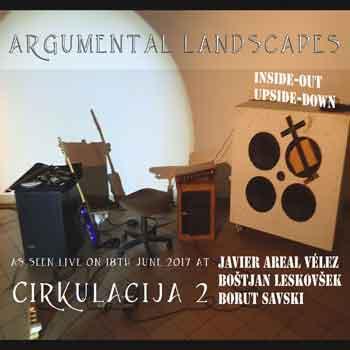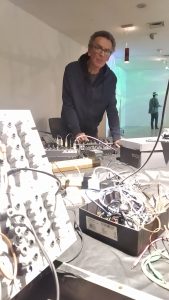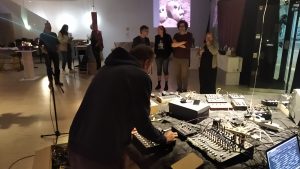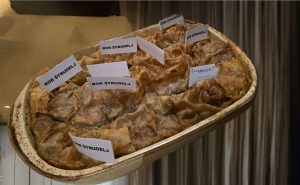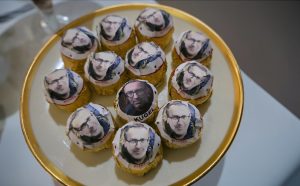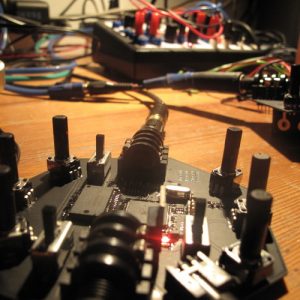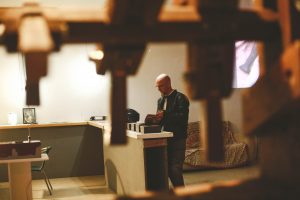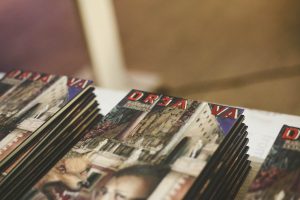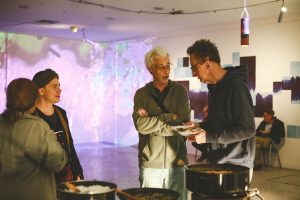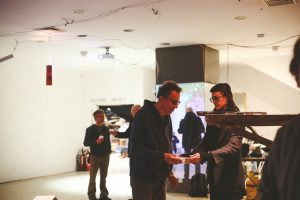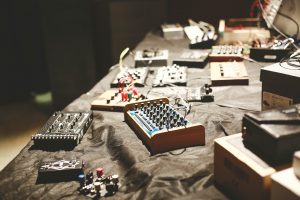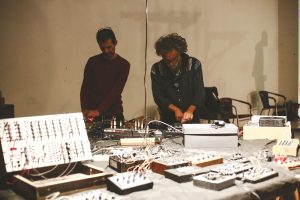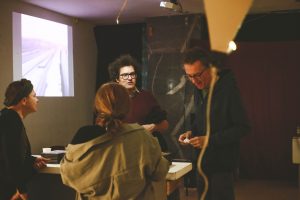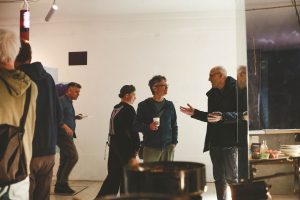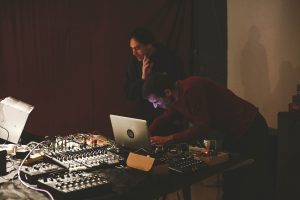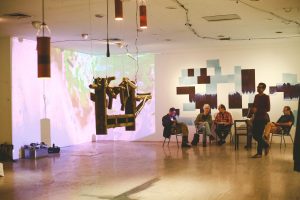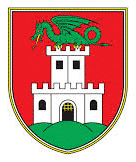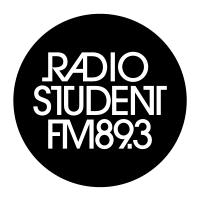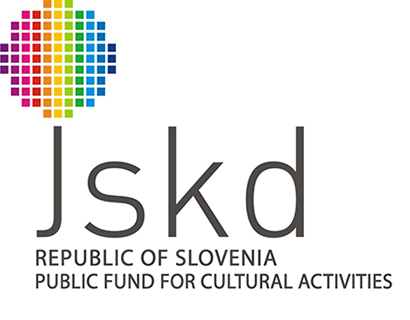Benefit za Boštjana Leskovška – pionirja umetnosti zvoka in poezije po pošti
Published on May 10th, 2024On Friday, May 10, 2024, from 5:00 p.m., we invite you to Cirkulacija 2, underpass Ajdovščina Ljubljana, for an empathic-altruistic afternoon & evening with the aim of raising funds to cover the costs of regular visits to Boštjan Leskovšek
A benefit for a pioneer of the art of sound and poetry by mail
charity event for the founding member of Cirkulacija 2, Boštjan Leskovšek, whose premature departure from our community was caused by Alzheimer’s disease (-> Wikipedia). We also hope for his personal participation! The evening will also be the inhabitation of the exhibition by Urška Savić Territories of returning.
Exhibited will be all the small synths of the great Boštjan, who in his time was a real collector of the most unusual ideas in this field! Some will be used in the evening’s cultural and artistic program!
Participating: Iva Tratnik, Ksenija Čerče, Andrej Lutman, Simon Svetlik, Borut Savski, Vlado Repnik, Stefan Doepner, Tatiana Kocmur, Marko Batista, Marko Košnik, Urška Savič, Glitch trigger, Dominik Mahnič, Sanja Simić, Majda Gregorič and all others…
![]() Boštjan Leskovšek / foto in instalacija Miha Koron
Boštjan Leskovšek / foto in instalacija Miha Koron
Boštjan Leskovšek, born in 1965 in Ljubljana, is a sound artist and poet and co-founder of the POPOPO movement (POEZIJA PO POŠTI) between 1996 and 2001. During this time, over fifty performances (happenings, sound poetry and writing poems by correspondence). In 2006, the poetry collection Drža Va was published. Participation in Intermediate Spaces 2006/07 ESC Graz gallery and Kapelica Gallery; installation and event (Sound baths). Enthusiastic about technology, science, philosophy and modern art – what I put together = hang out in the initiative Circulation 2 since 2007. NanoŠmano project, creation with scientists and artists in the production of the Kapelica gallery (2010-12). Records released by Trivia Records: Nature of Patience 2007, Puščava realnego 2008, VesOlje 2003/10, Cirkulacija 2 and Bogdana Herman 2009, Vmesni Prostori 2009, XL Experiment, Ves Olje, Surface of Event 2010 (all at http://www.3via. org/records/). He participated as a group and as an author in all the projects of Cirkulacija 2, of which he is a co-founder.
https://www.instagram.com/jokel11/
https://www.locutio.si/avtorji.php?ID=143&clanek=363
Media notes:
Žiga Pucelj: Pluralnost zvočnih motivik – SIGIC 2013
https://www.sigic.si/pluralnost-zvocnih-motivik.html
Boštjan Leskovšek rounded off the three-day mini-festival The Sound of the Organism – Organism of Sound with a very strong sound image based on the parallel flow and meeting, annihilation and metamorphosis of identical signals. In my eyes, his digital-analog technical setting is most characterized by great complexity, when electronic sounds acquire the properties of unpredictable environmental sound, and Leskovšek emphasizes this complexity with the parallel use of long field recordings. Boštjan is that member of Circulation 2 who seems to deal with sound in its purest form at his performances, with the least conceptual superstructure or foundations…
Goran Kompoš reviews the performances of Boštjan Leskovšek and Felix Thorn at the Sonica 2009 festival – Radio Študent
https://old.radiostudent.si/article.php?sid=19650
Leskovšek, otherwise a member of the group Cirkulacija 2, cannot usually be seen in a concert context, but this time, despite the scant twenty minutes, he showed that he is no stranger to this form either. He composed a single piece at the intersection of drone and noise to confirm the saying; “make noise long enough and loud enough, and sooner or later harmonic, melodic and rhythmic structures will open up in it”. Leskovšek generated a dynamic, sub-bass-based, focused sound stream entirely live via oscillators and feedback loops, thereby not only avoiding the usual laptop stiffness, but skillfully utilizing the advantages of spontaneity and creation in real time. Here we could draw some parallels with the duo Orton, but where Lednik and Tasič embark on retro readings, Leskovšek follows more modern noisy guidelines, although of course he does not like to define himself musically…
ROR manifest
Materiality of ROR remembers the first inarticulate, mumbling voices, purely organ sounds emerging from within the body. This memory is littered with events over psychosocial conditions in time and space. Its binding are the responses of flesh to the thinking of the machine. Hierarchy of thinking and the machineness of life are the occupation and struggle of ROR’s primary origins.
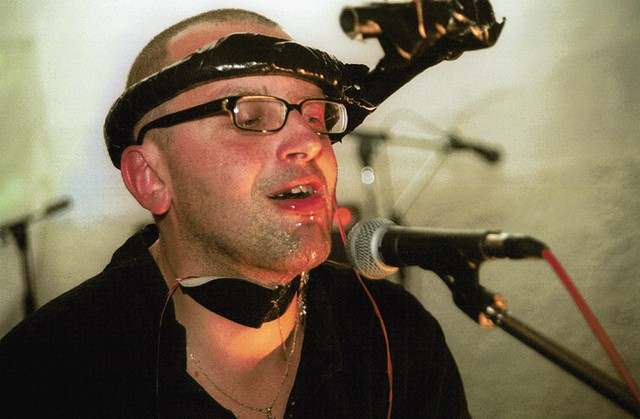 Language is put to the test with the wonders of sensuality on experimenting with the sounds of everyday banality. Sound poetry becomes a self reflective advertising brand, ludistic to the extent of being the foundation of expression and, thus, the only genuine freedom. Archaic play of showings and readings addresses the articulate simulee/listener through voicers (throat, microphone, amplifier, speakers). The result of this generativity is rejection and revolt. Contours of the system become distinct and sharp.
Language is put to the test with the wonders of sensuality on experimenting with the sounds of everyday banality. Sound poetry becomes a self reflective advertising brand, ludistic to the extent of being the foundation of expression and, thus, the only genuine freedom. Archaic play of showings and readings addresses the articulate simulee/listener through voicers (throat, microphone, amplifier, speakers). The result of this generativity is rejection and revolt. Contours of the system become distinct and sharp.
Naive limitlessness of language is domineeringly caught in an endless loop. But since ROR emphasises contingency as essential within expression, be it before or now, it is separated from language with sound. Separation is a pressing demand of situation. It is a liminal space, which is contingent and indefinable. It is event and truth at the same time. Declaration for sound opens up the scope of perception. It frees bodily sensuality in thinking of the machine.
In ROR the machine is computer, microphone, bottle, mixer, plastic tube… the body is ears, mouth, eyes, skin… There is a cleavage between body and machine which paradoxically unites them both in the liberation of structural determination. This draws on the relation of changeability/transience, which leads to conflicts, be it personal or social. Disintegration, always actively heard, is inexorably free, if, of course, the subject is willing to explore the unknown.
The society of contentment and consent led ROR and people to absent observers of the world to safety zones of standards, rules, unification. Thus ROR is via reaction a symptom a disturbance. Resources used are commercial music software, ideal for manipulation. It enables control of oneself as well as of others. It resembles educational systems and has its own values. It makes one an obedient, malleable, interested slave. All this is true if one follows the instructions of those trained (good creative persons) or those enclosed (creative persons who want to BE good).
ROR approaches the software in the same way as workers in the time of industrial revolution when they were breaking machines, ludistically. The breaking produces excellent sound/noise. Avantgardism of breaking the mirror into random pieces and situationist gazing at them presents the first wing of freedom within ROR’s expression. In here ROR acts as a child who breaks the toy only to be able to use it later in a different way.
This different way is – in comparison with the child – problematic for ROR, which reflects its sound. Conflicts within ROR resemble conflicts in society. Through sound processing – which is not influenced, it is triggered and flows on its own – something temporary emerges, which the thinking machine considers an error a disturbance or a fall-out, a collapse. Radicality is released and an unrepeatable trace of truth slides through. When there is no collapse the system is renewing and repeating in time passes into sound monotony.
Reaction from outside (discourse) is triggered, with which the subject attempts to articulate goings-on into the sequence of events and eventually recognizes her/himself as limited discontinuous and passes into aloneness. Differentness occurs within her/him as disintegration, which is already her/his own genuine sound.
Codependence of actions within ROR escapes interpretation and this presentation is an attempt of an analysis of the momentary, which tries to fence off the assumptions about what and in what ways ROR is.
/Boštjan Leskovšek/
- Screenshot
